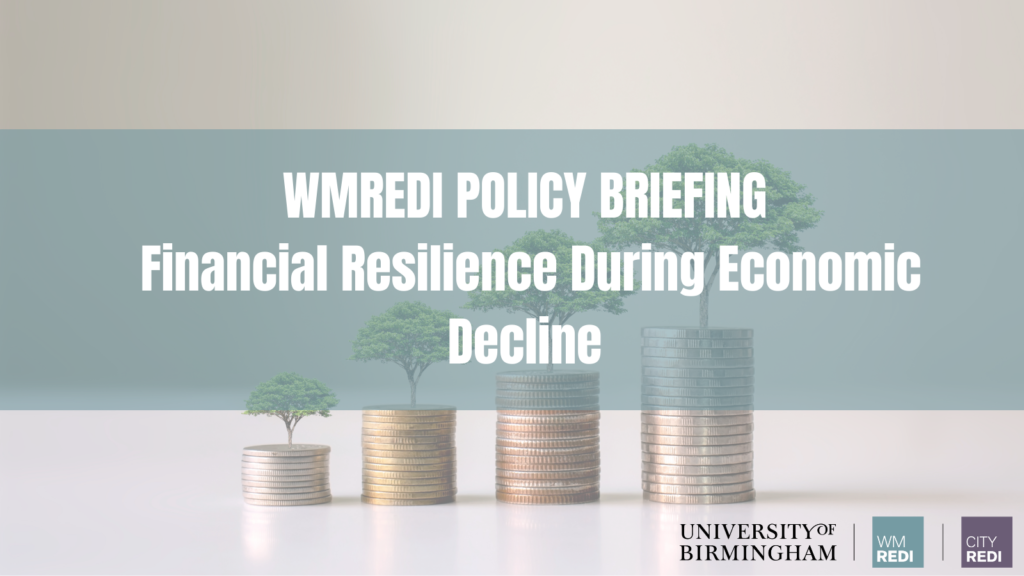
In this policy briefing, Dr Amir Qamar, Dr Emma Gardner, Professor Anne Green and Professor Simon Collinson review the financial health of the largest 50 manufacturing firms within the West Midlands.
Introduction
The ongoing impact of the UK’s departure from the EU, the aftermath of the pandemic, and the recent depreciation of the pound provide a clear need and opportunity to explore strong resilience, and in turn regional resilience in some depth. The manufacturing sector is particularly vulnerable as the aforementioned factors have significantly increased production costs.
As the fifth largest region in terms of gross value added the West Midlands plays an important role in the UK economy. Given that the West Midlands manufacturing sector produces 15.4% of the region’s total output, which is 5.5% higher than the average across UK regions (9.9%), with over 300,000 people working in the sector, the region is relatively dependent on the manufacturing sector relative to other regions.
As manufacturing sectors are some of the hardest hit by the changing macro-environmental factors there is an urgent need to understand the financial health of operating firms within the UK. More specifically, we study the largest (based on revenue) 50 manufacturing firms in the West Midlands, to assess which of these firms are likely to require the most support during the current economic downturn.
Findings
Our analysis of the financial resilience of the largest West Midlands manufacturers on the basis of their current ratio finds that 20 of these firms are considered to be high-risk. Cumulatively these high-risk firms have a workforce of 105,320.
Crucially, a large proportion of the identified high-risk firms are located downstream or ‘relatively’ downstream (close to the end consumer) within their respective supply chains. Thus, if these giant firms were to fail there would be severe repercussions amongst their supply chains (e.g. ripple effects) which could lead to downsizing and inevitably redundancies more broadly across the sector. This is particularly relevant to the automotive sector and a number of OEMs (e.g. Jaguar Land Rover, Aston Martin) are highlighted as high-risk firms.
We find that there are 12 firms which we identify as medium-risk and these firms employ 34,757 individuals. Finally, there are 18 low-risk firms that together employ 68,675 people. These firms are considered relatively healthy in terms of their financial resilience; thus, we consider these jobs relatively secure.
Key policy findings:
In line with our findings we call for a number of policy interventions:
- Policymakers need to ensure support mechanisms are properly governed (e.g. energy relief scheme).
- Support packages need to be proportionally tailored to firms that account for a disproportionate share of employment and value-added in the region.
- Should there be major redundancies it is crucial that skilled workers are supported to other jobs within the sector or to other sectors where their skills can be utilised productively.
- Policies need to reflect the importance of existing foreign investment as opposed to solely attracting new investment.
This blog was written by, Dr Amir Qamar, Dr Emma Gardner, Professor Anne Green and Professor Simon Collinson, City-REDI / WMREDI, University of Birmingham.
Disclaimer:
The views expressed in this analysis post are those of the authors and not necessarily those of City-REDI or the University of Birmingham.
